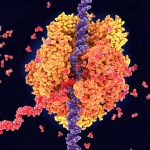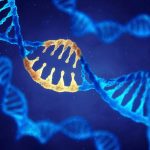Combining two chemical-free treatments shows promise as an approach for reducing biofilm build-up on anaerobic bioreactor membranes.
Clean and energy efficient wastewater treatment plants will form a critical part of future water resource management. Now, researchers at KAUST have demonstrated a chemical-free approach for tackling biofilm buildup on membranes in anaerobic bioreactors. The technique combines two previously trialed methods:UV irradiation and viruses called bacteriophages that infect and kill bacteria.
Anaerobic membrane bioreactors filter wastewater, separating sludge from the liquid component to generate nonpotable water for a range of uses, including for landscaping or agricultural purposes. However, over time, complex communities of bacteria, or biofilms, accumulate on the membranes, reducing efficiency and creating pressure on the filtering system. Traditionally, membranes are removed at regular intervals and cleaned with acids, but scientists are keen to find greener, more efficient ways of resolving biofouling.
“Individually, both bacteriophages and UV irradiation have shown promise as chemical-free treatments,” says Giantommaso Scarascia, former Ph.D. student who worked on the project under the supervision of KAUST’s Peiying Hong. “However, on their own, they cannot match the efficacy of chemical treatment. We investigated if combining the two methods would work better.”
Bacteriophages are very species-specific: each phage will only infect a specific bacterial species. The researchers worked to identify which bacteria were present in the biofilms and then to determine which bacteriophages would kill them. To complicate matters further, bacteriophages are killed by UV irradiation if the UV is too strong or used for too long.
“We had to find the perfect balance of UV plus the exact bacteriophage cocktail to use,” says Scarascia. “It took several thousand trials to determine which bacteriophages would work. It takes time to grow biofilms—and then, after waiting, you only get one shot to try the technique on each membrane.”
Their persistence paid off, with the combined treatment improving on the removal of cells and extracellular material compared with each method alone.
“The bacteriophages kill cells, creating holes in the biofilm,” says Scarascia. “This disrupts the integrity of the biofilm’s structure, meaning the UV irradiation can penetrate into the deeper layers and reduce the biofilm still further.”
When compared with chemical treatment, the combined method was equally good at killing bacterial cells but did not remove as much extracellular material. Since this work was published, however, the team reports they have been able to repeat the combined method over four cleaning cycles and it continues to function well at removing the biofilm matrix.
Scarascia notes that scaling up this approach from the lab to industrial scale will be challenging, in part because of the bacteriophages’ specificity and the need to produce each phage in bulk quantities. Currently, this technique is proven for anaerobic bioreactors with external membranes. More work is needed to verify the method for aerobic bioreactors and the researchers are actively working to achieve translation of the method.


